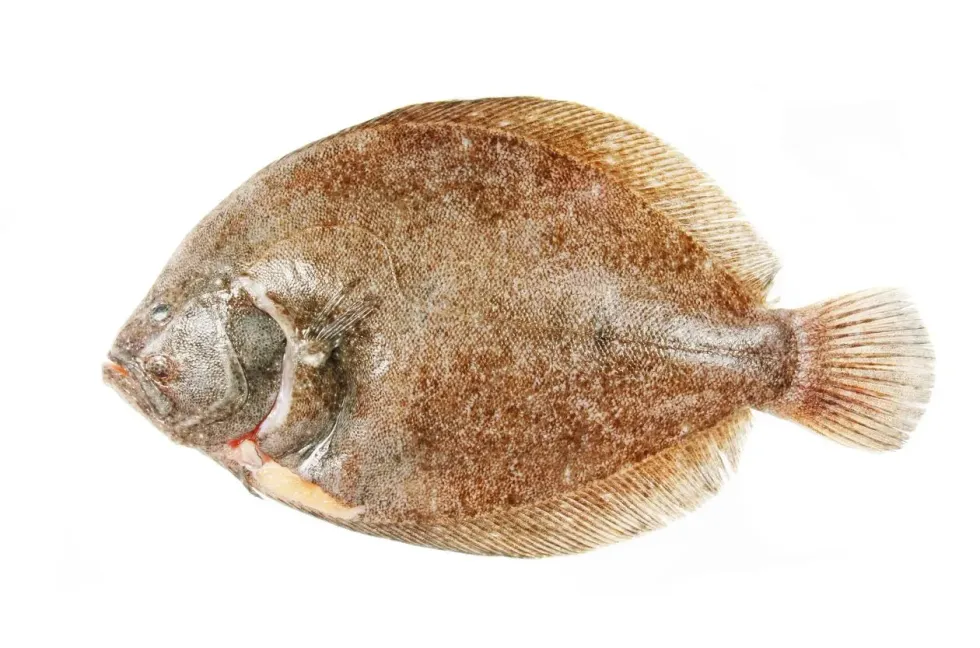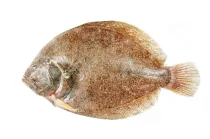We all love fish, don't we? Brill fish is a species of turbot flatfish family. The scientific name of brill fish is Scophthalmus rhombus. This species of flatfish is usually sandy brown with a creamy white underside, and brownish spots (light or dark).
However, like most flatfish, it has the power to camouflage according to the environment. Due to this, their appearance often confuses people. They have extremely smooth skin, unlike turbot fish.
The texture of the flesh of brill fish is pretty similar to turbot. Brill is a large flatfish that can be found in European waters. They are economically significant and, in some cases, are extensively attacked by merchant vessels. Brill is often mistaken for turbot.
Brill fish (Scophthalmus rhombus) is mostly found in coastal areas, such as the North Atlantic, Mediterranean Sea, Baltic Sea, and western coast of Canada. Although these fishes are cheap, they are quite tasty.
They feed on small fish, insects, mollusks, and crustaceans. From coastal waters to ocean beds, this bottom-dweller favors a muddy or graveled seafloor. Young fry lives in coastal waters and shifts to the seafloor when they exceed in length.
This occurs at the same time as their transformation into a normal flatfish. The right eye also shifts its position to the left side of the body.
If you like reading animal facts, do check out milkfish facts and gurnard facts
Brill Fish Interesting Facts
What type of animal is a Brill fish?
A Brill fish is a type of fish. It belongs to the family Scophthalmidae.
What class of animal does a Brill fish belong to?
Brill fish belong to the class of Actinopterygii.
How many Brill fish are there in the world?
The exact number of Brill fish is not known. However, as their conservation status is Not Listed by the Internation Union for Conservation of Nature or the IUCN Red List, so it can be assumed that there is no immediate threat to its population.
Where does a Brill fish live?
Brill is mostly found in the Atlantic Ocean, the English Channel, the Celtic Sea, and the Irish Sea to the south and west of the British Isles. However, smaller scattered populations can be found in the United Kingdom.
In the spring, fully grown Brill can migrate from offshore into shallower water to spawn. Their coverage stretches from Icelandic waters to Africa's northern coast, as well as the Mediterranean and Black Seas.
What is a Brill fish's habitat?
Brill fishes live in the coastal areas. This species prefers seabeds, but they can also be found on gravel or soil. However, they prefer the muddy and sandy ground. Therefore, a lot of them live on seabeds. People paddling at the water's edge or in rockpools on the low shore often see juvenile Brill fish.
Who does Brill fish live with?
Brill fish is found in groups of their own. They are either found on the sea beds or the shores.
How long does a Brill fish live?
Brill fish can live up to six years.
How do they reproduce?
Brill fish, like most fishes, reproduce through spawning. The process of spawning happens from March to August. The eggs contain fat, so they float in water. After about two weeks, the eggs hatch. The fry eats small crustaceans and plankton soon after being born.
What is their conservation status?
According to The International Union for Conservation of Nature Red List of Threatened Species (IUCN Red List), the conservation status of Brill fish (Scophthalmus rhombus) is of Least Concern.
Brill Fish Fun Facts
What do brill fish look like?

Juvenile fishes undergo metamorphosis, due to which their body structure and texture change, and body form becomes oval. As the fish undergoes metamorphosis, the right eye shifts to the left side of the body as is natural for most flatfishes.
Brill, unlike the turbot, has smooth eyes, thin, round, closely spaced scales, and no bony bumps. They have two different fins: back and anal. Brill is a wide, broad-bodied flatfish with left eyes.
Brill, like many flatfish, can camouflage and can change its color to blend in with the seabed. For camouflage, Brill fishes dig themselves into the bottom sediment, requiring less steady equilibrium.
Just before the broad curved mouth, the dorsal fin begins. The fin membrane does not fully bind the first few rays of the dorsal fin, giving it a frilly look. In the area of the pectoral fin, the lateral line is curved.
It's normally a sandy brown color with lighter and darker flecks and spots, but the tail fin is devoid of spots. It has a creamy-white underside.
How cute are they?
Brill fish are not cute to look at. It has eyes on one side of its body and a dull brownish color that makes it look scary.
How do they communicate?
Like most fish, Brill communicates using movements and gestures. Similar to other fishes, the body movements serve as gestures and they help in communicating the mood of the fish. These fishes sense their surroundings and communicate accordingly by their visual powers and the lateral line of vibration, thereby effectively communicating with other fishes of similar species.
How big is a Brill fish?
A Brill fish has an average length of About 12-29 in (30-75 cm). In comparison, a turbot fish has a length of 40 in or 102 cm. So we can safely say that the turbot is almost twice the size of a Brill fish.
How fast can a Brill fish swim?
Brill fish is a species of fish that is not particularly known for their swimming speed, as they are mostly seen offshore or at the sea bottom. Therefore, the exact swimming speed is not known.
How much does a Brill fish weigh?
A Brill fish weighs between 4.4-8.8 lb (2-4 kg). The turbot, on the other hand, is a large fish and weighs roughly 55 lb or 25 kg.
What are the male and female names of the species?
This species of fish do not have separate names for male and females.
What would you call a baby Brill fish?
A baby Brill fish is called a fry.
What do they eat?
Brill aren't picky eaters, and they often alternate between scavenging and searching for food. They search the seabed for invertebrates, coral worms, and any crabs, prawns, and lobsters they may find. They can also kill and eat sand eels and small bottom-dwelling fish.
Are they poisonous?
No evidence suggests that the Brill fish is poisonous.
Would they make a good pet?
Brill fish require a natural habitat to survive. They live on sandy bottoms. Therefore as they are wild animals they are not suitable as pets.
Did you know...
The migratory behavior of the Brill on English inshore waters is little understood, but they do tend to migrate far offshore as they get older.
Although boat anglers catch Brill regularly, shore anglers have a harder time catching them due to the much deeper offshore water they prefer. Brill is only accessible to most anglers during the spring breeding season, and this is the best time to hunt this fish.
Fishing at a distance over sandy or shingle seabeds is the safest way to land Brill.
How can you tell the difference between a turbot and a Brill?
The key distinction is that Turbot has a circular body shape, while Brill has a much longer body shape. The skin of Turbot is also rougher, while the skin of Brill is softer.
Is Brill a bony fish?
Brill belongs to the class of Actinopterygii. This class consists of bony fishes; therefore, it can be said that Brill is a bony fish.
Here at Kidadl, we have carefully created lots of interesting family-friendly animal facts for everyone to discover! For more relatable content, check out these Anglerfish facts or Angelshark facts.
You can even occupy yourself at home by drawing one on our Brill fish coloring pages.










